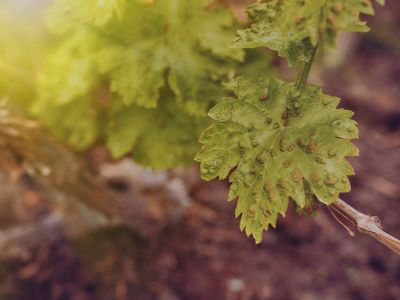Anthracnose Disease Info
Anthracnose is a fungal disease that tends to attack plants in the spring when the weather is cool and wet, primarily on leaves and twigs. The fungi overwinter in dead twigs and fallen leaves. Cool, rainy weather creates perfect conditions for the spores to spread. Dry and hot weather stop the progression of the disease that may begin again once the weather conditions become optimal. The problem can be cyclic but is rarely fatal. Anthracnose fungus infects many deciduous and evergreen trees and shrubs, as well as fruits, vegetables, and grass. Anthracnose is noticeable along the leaves and the veins as small lesions. These dark, sunken lesions may also be found on stems, flowers, and fruits. In order to distinguish between anthracnose and other leaf spot diseases, you should carefully examine the undersides of leaves for a number of small tan to brown dots, about the size of a pin head. If you are unsure about diagnosing anthracnose, consult your local Cooperative Extension office for assistance and additional anthracnose disease info.
What Plants Get Anthracnose?
A wide variety of plants can be affected by anthracnose fungus, including those grown outside of a greenhouse, such as woody ornamentals and tropical foliage plants. Potted plants and greenhouse crops such as cyclamen, ficus, lupine, palms, succulents, and yuccas are sometimes affected. Trees and shrubs that are prone to anthracnose include maple, camellia, walnut, ash, azalea, oak, and sycamore.
How Do You Treat Anthracnose?
Anthracnose control begins with practicing good sanitation. Picking up and disposing of all diseased plant parts, including twigs and leaves, from the ground or from around the plant, is important. This keeps the fungus from overwintering near the plant. Proper pruning techniques to rid trees and plants of old and dead wood also helps with prevention of anthracnose fungus. Keeping plants healthy by providing proper light, water, and fertilizer will strengthen the plant’s ability to ward off a fungus attack. Stressed trees and plants have a difficult time recovering from anthracnose fungus. Chemical treatment is rarely used except when the disease involves newly transplanted plants or continual defoliation.
